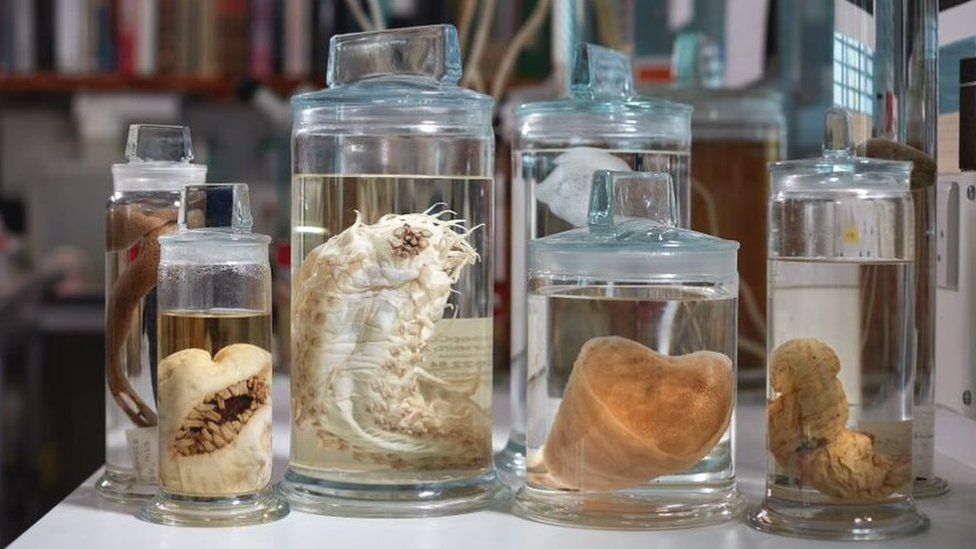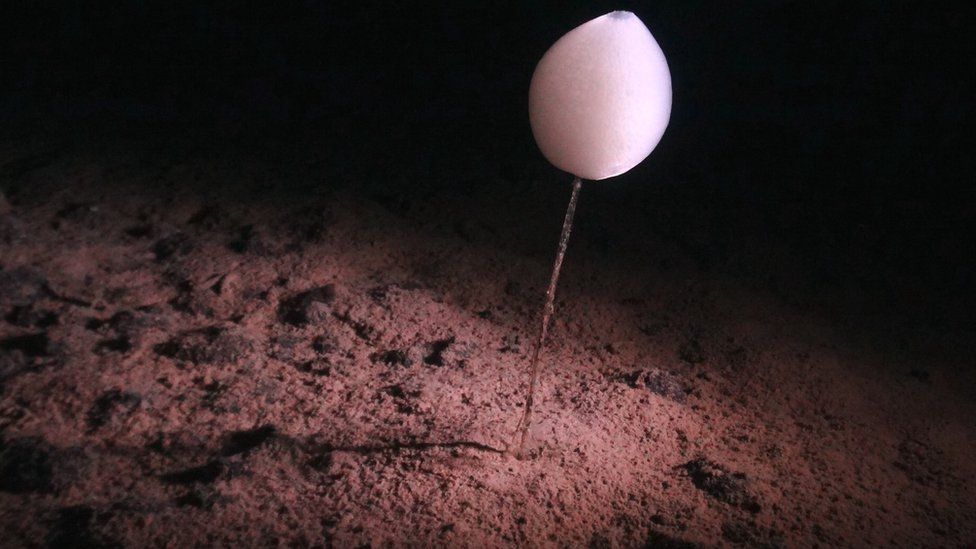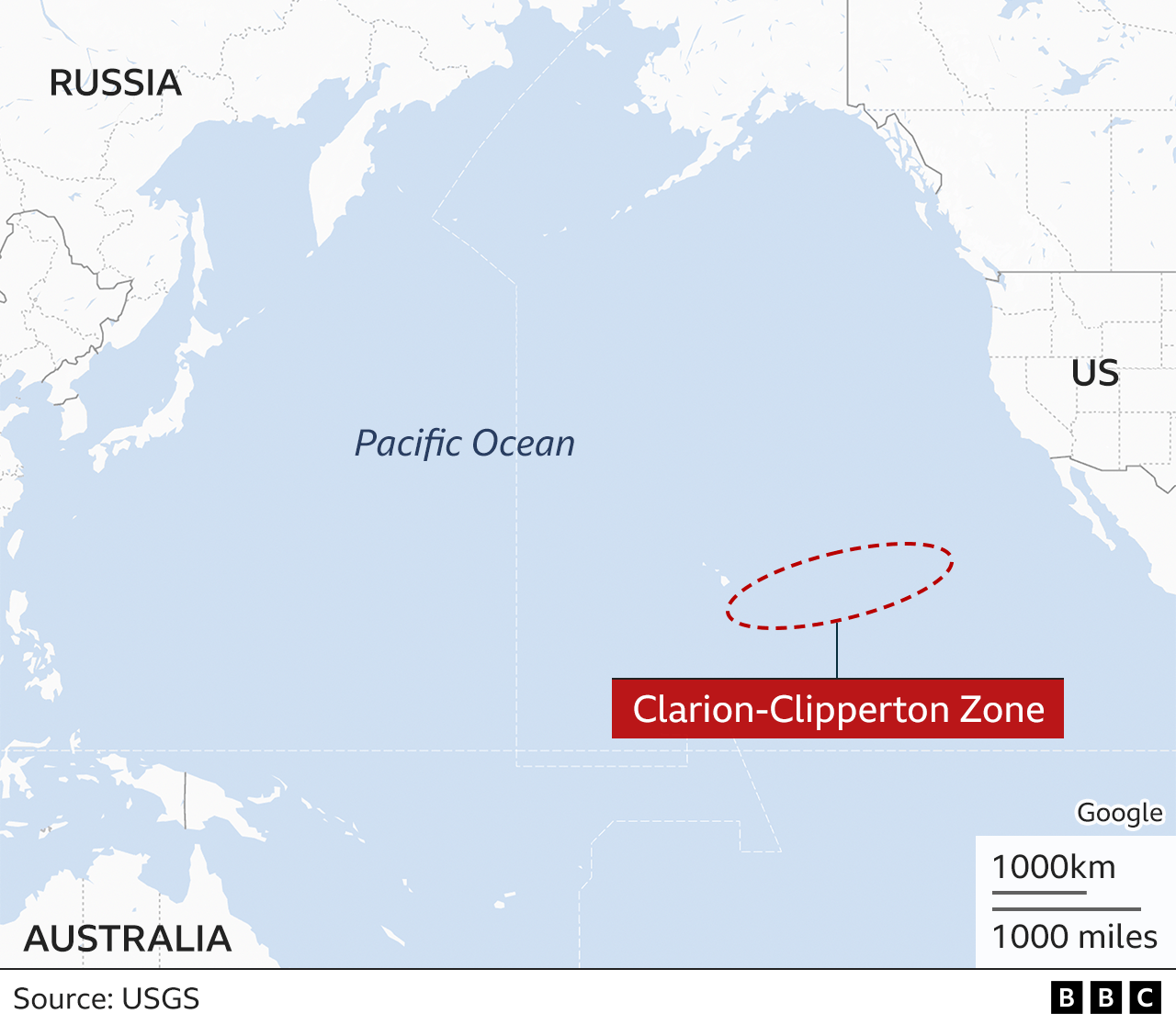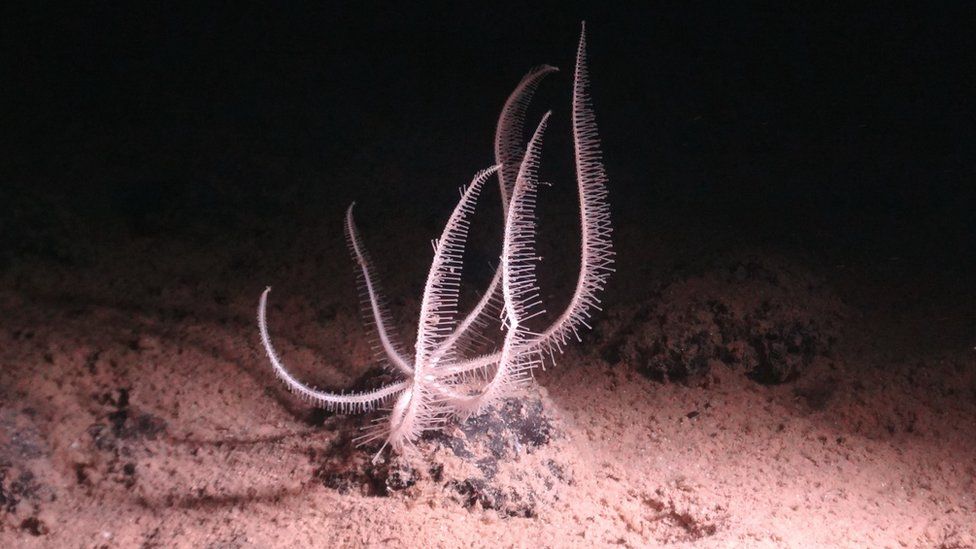By Helen Briggs
A vast stretch of ocean floor earmarked for deep sea mining is home to thousands of oddball sea creatures, most of them unknown to science.
They include weird worms, brightly coloured sea cucumbers and corals.
Scientists have put together the first full stocktake of species to help weigh up the risks to biodiversity.
They say more than 5,000 different animals have been found in the Clarion Clipperton Zone of the Pacific Ocean.
The area is a prime contender for the mining of precious metals from the sea bed, which could begin as early as this year.
Companies want to exploit valuable deep-sea metals in international waters, but have yet to start extraction.
The place is "a wonderfully weird environment" with a plethora of creatures - "everything from strange [sea] cucumbers with elaborate sails on their back to beautiful glass sponges," said Muriel Rabone of the Natural History Museum in London.
"We need to know what the biodiversity is and what we may lose from any mining impacts," she added.
The researchers sifted through hundreds of scientific papers and thousands of records in databases to compile an inventory of life-forms in the zone.
Of the thousands of "otherworldly", "beautiful" and "ethereal" animals recorded, only 400 are known to science.
The list includes:
- Tiny shrimp-like crustaceans
- Worms
- Corals
- Sponges made of glass
- Red and orange sea cucumbers known as "gummy squirrels and bears"
- Urchins, brittle stars and sea lilies
The animals have evolved in isolation over the course of millions of years in the cold, dark conditions of the ocean floor.
The vast majority (90%) are new to science and have yet to be given a formal scientific name and ascribed to their place in the tree of life.
Dr Adrian Glover, also of the Natural History Museum, said we are on the eve of some of the largest deep-sea mining operations potentially being approved.
We must ensure any such activity is done in a way that "limits its impact upon the natural world", he said.
Commercial deep-sea mining to harvest rocks containing valuable metals has been proposed - and rigorously opposed - for decades.
Some believe the minerals found in the seafloor are a promising source of metals such as cobalt and nickel needed for technologies such as mobile phones, wind turbines and EV batteries.
But opponents have argued that we don't know enough about ocean ecosystems to guarantee that mining won't cause irreparable harm.
The research is published in the journal, Current Biology.
Data on life beneath the ocean waves has been gathered through scores of scientific expeditions where equipment is lowered to the ocean floor to collect specimens and images.





Comments
Post a Comment